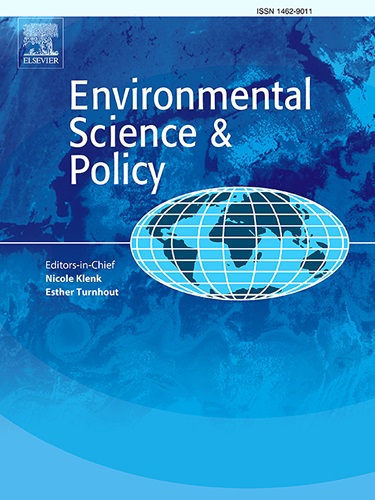A decision support system for aiding watercourses classification processes
IF 4.9
2区 环境科学与生态学
Q1 ENVIRONMENTAL SCIENCES
引用次数: 0
Abstract
Economic and social development has imposed challenges for the management of water quality, leading to conflicts among users and the need to develop tools and regulatory frameworks to protect water resources. In this study, a decision support system (DSS) was developed to assist the phases of diagnosis, prognosis, and monitoring, resulting from the implementation and monitoring of water bodies classification processes. The construction of the DSS involved the integration of a mathematical model of water quality and water quality permanence curves within the geographic information system (GIS) environment. By adopting water quality permanence curves, the DSS allows decision-making based on the frequency of compliance with the maximum allowable load of the pollutant under different flow conditions, considering scenarios of pollution increase or control. The DSS was applied to the Jucu river basin as a case study, where it was possible to identify the watercourses most impacted by pollutant inputs and which quality parameters require attention to compliance the quality conditions of the most restrictive classes. By allowing the joint visualization of field monitoring data with water quality permanence curves, the system allows the monitoring of established quality goals and may assist decision-makers in revising goals or improving pollution management. The results indicated that the developed system is useful in assisting managers to define fair water resource management rules and can be applied in the definition or monitoring of water bodies classification in other river basins.
辅助河道分类过程的决策支持系统
经济和社会发展对水质管理提出了挑战,导致使用者之间的冲突,需要制定保护水资源的工具和管理框架。在本研究中,开发了一个决策支持系统(DSS)来辅助诊断、预后和监测阶段,这是由水体分类过程的实施和监测产生的。决策支持系统的建设涉及地理信息系统(GIS)环境下水质数学模型和水质永久曲线的集成。DSS采用水质永久曲线,根据不同流量条件下污染物最大允许负荷的符合频率,考虑污染增加或控制的情景,进行决策。发展支助系统作为一个案例研究应用于juu河流域,在那里可以确定受污染物输入影响最大的水道,以及哪些质量参数需要注意遵守最严格类别的质量条件。通过将现场监测数据与水质永久曲线联合可视化,该系统可以监测既定的质量目标,并可以帮助决策者修改目标或改善污染管理。结果表明,开发的系统有助于管理者制定公平的水资源管理规则,并可应用于其他流域水体分类的定义或监测。
本文章由计算机程序翻译,如有差异,请以英文原文为准。
求助全文
约1分钟内获得全文
求助全文
来源期刊

Environmental Science & Policy
环境科学-环境科学
CiteScore
10.90
自引率
8.30%
发文量
332
审稿时长
68 days
期刊介绍:
Environmental Science & Policy promotes communication among government, business and industry, academia, and non-governmental organisations who are instrumental in the solution of environmental problems. It also seeks to advance interdisciplinary research of policy relevance on environmental issues such as climate change, biodiversity, environmental pollution and wastes, renewable and non-renewable natural resources, sustainability, and the interactions among these issues. The journal emphasises the linkages between these environmental issues and social and economic issues such as production, transport, consumption, growth, demographic changes, well-being, and health. However, the subject coverage will not be restricted to these issues and the introduction of new dimensions will be encouraged.
 求助内容:
求助内容: 应助结果提醒方式:
应助结果提醒方式:


